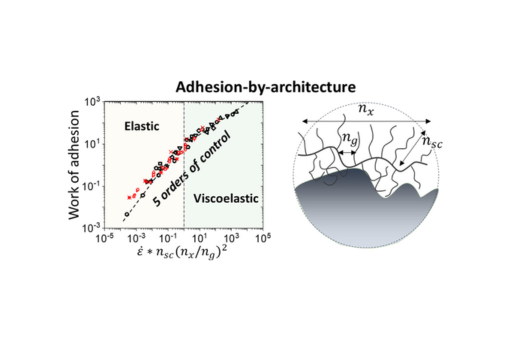Sticky Architecture: Encoding Pressure Sensitive Adhesion in Polymer Networks
Abstract
Pressure sensitive adhesives (PSAs) are ubiquitous materials within a spectrum that span from office supplies to biomedical devices. Currently, the ability of PSAs to meet the needs of these diverse applications relies on trial-and-error mixing of assorted chemicals and polymers, which inherently entails property imprecision and variance over time due to component migration and leaching. Herein, we develop a precise additive-free PSA design platform that predictably leverages polymer network architecture to empower comprehensive control over adhesive performance. Utilizing the chemical universality of brush-like elastomers, we encode work of adhesion ranging 5 orders of magnitude with a single polymer chemistry by coordinating brush architectural parameters–side chain length and grafting density. Lessons from this design-by-architecture approach are essential for future implementation of AI machinery in molecular engineering of both cured and thermoplastic PSAs incorporated into everyday use.
Citation
Sticky Architecture: Encoding Pressure Sensitive Adhesion in Polymer Networks
Mitchell Maw, Erfan Dashtimoghadam, Andrew N. Keith, Benjamin J. Morgan, Alexander K. Tanas, Evgeniia Nikitina, Dimitri A. Ivanov, Mohammad Vatankhah-Varnosfaderani, Andrey V. Dobrynin, and Sergei S. Sheiko
ACS Central Science 2023 9 (2), 197-205
DOI: 10.1021/acscentsci.2c01407


